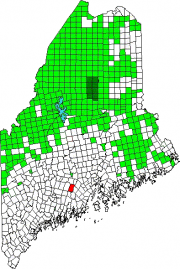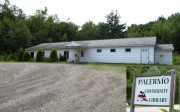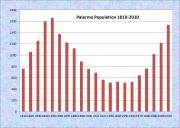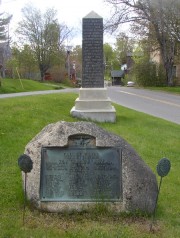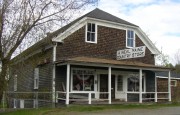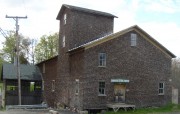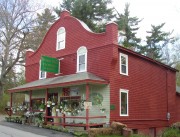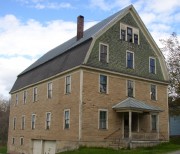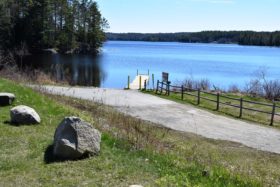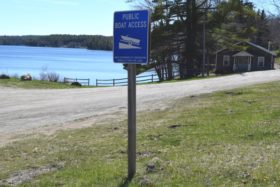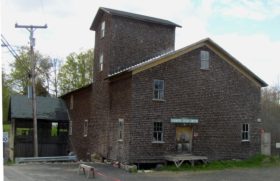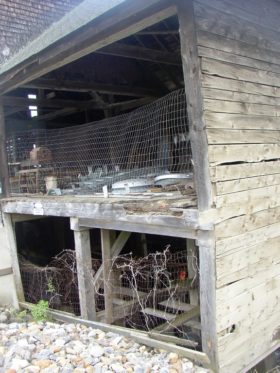| Year | Population |
|---|---|
| 1970 | 645 |
| 1980 | 760 |
| 1990 | 1,021 |
| 2000 | 1,220 |
| 2010 | 1,535 |
| Geographic Data | |
|---|---|
| N. Latitude | 44:23:49 |
| W. Longitude | 69:25:33 |
| Maine House | District 96 |
| Maine Senate | District 11 |
| Congress | District 2 |
| Area sq. mi. | (total) 43.5 |
| Area sq. mi. | (land) 40.6 |
| Population/sq.mi. | (land) 37.8 |
County: Waldo
Total=land+water; Land=land only |
|
[pal-AIR-mow] is a town in Waldo County, settled in 1778 and incorporated June 23, 1804 from the plantation of Great Pond Settlement.
The “Great Pond” was Sheepscot Pond, also known as Sheepscot Lake, now a recreational area and site of a State Fish Hatchery.
Palermo is dotted with numerous ponds and streams, providing an attractive escape from business life in the Augusta and Belfast areas, both easily accessible on Maine Route 3.
The town has three villages. Palermo, at the south end of Branch Pond, spills over into China and was once known as Branch Mills.
Greely Corner is on Route 3 just west of Sheepscot Pond. East Palermo is on the same highway just east of Sheepscot Pond.
Branch pond, in the main village, is the site of the historic Dinsmore Grain Company Mill. The Branch Mills Grange Hall is nearby in the village.
According to news reports, the president of the town’s historical society recalled that “the four-story building housed the Town Office, Town Meetings and school graduations were held on the stage in the auditorium, and dances brought town residents together for social outings.”
In 2015 the building was in danger of collapse without an expensive renovation. However, in 2016, with the help of community volunteers providing labor, expertise, and equipment, the local landmark had been stabilized, with the expectation that rescue project would be concluded in 2017.
The boat launch is at Sheepscot Pond off Maine Route 3, just east of Greely Corner. The nearly 1,200 acre Lake is a major headwater of the Sheepscot River.
It also provides water for the operation of the Palermo Fish Cultural station. The boat ramp ramp off Rt. 3 on the lake’s provides access for anglers and other recreational users.
The Lake contains a large volume of deep, cold well-oxygenated water that satisfies the habitat requirements of a variety of cold-water game fish, including landlocked salmon, brown trout, lake trout (togue), brook and rainbow trout, large- and small-mouthed bass, and smelt.
Additional resources [Click images to enlarge and clarify]
Dowe, Milton E. History [of the] Town of Palermo incorporated 1804. 1954.
Dowe, Milton E. Palermo, Maine: Things That I Remember in 1996. Palermo, Me. Palermo Historical Society. 1997.
Goodwin, Allen. Allen Goodwin Papers: Records of Allen Goodwin of Palermo & Montville, Maine, 1851-1917. compiled and indexed by Isabel Morse Maresh. 2000. [University of Maine Library, Special Collections]
Goodwin, Allen. A History of the Early Settlement of Palermo, Me. Belfast, Me. Age Publishing Co. 1896.
Howard, Millard A. An Introduction to the Early History of Palermo, Maine. 1976.
Lowell, Jessica. “Residents grapple with future of Branch Mills Grange in Palermo.” October 12, 2015. http://www.centralmaine.com/2015/10/03/residents-grapple-with-future-of-branch-mills-grange-in-palermo/(accessed December 23, 2016)
Lowell, Jessica. “Branch Mills Grange in Palermo celebrates season of thanks.” November 22, 2016. http://www.centralmaine.com/2016/11/22/branch-mills-grange-in-palermo-celebrates-season-of-thanks/ (accessed December 23, 2016)
*Maine. Historic Preservation Commission. Augusta, Me. Text and more photos from National Register of Historic Places: http://pdfhost.focus.nps.gov/docs/nrhp/text/79000147.PDF and http://pdfhost.focus.nps.gov/docs/nrhp/photos/79000147.PDF
Palermo, Maine. Tenth School District. Clerk’s book, 10th School District, Palermo. Palermo, Me., 1829-1858. Maine State Library.
Spratt Family. Family Papers, 1880-1969. (bulk 1880-1920). (Cataloger Note: The collection contains correspondence of Fred E. Spratt and Chessman Chadwick Spratt, two brothers born in Palermo, Maine. Most of the letters were written by Fred to Chessman and reflect his life on the family farm. They include comments on agriculture, crops, planting, and prices, general comments on the weather and its effects on crops, as well as family and local news.) [University of Maine, Raymond H. Fogler Library, Special Collections]
National Register of Historic Places – Listings
Dinsmore Grain Company Mill
[West of Palermo on Maine Route 3] The original Mill on this site began operating in the early 19th century. In 1817, it was owned by Joseph Hacker, who passeed it on to his son-in-law Jose Greely. In 1879, Mr. Greely took on a partner, his son-in-law Thomas Dinsmore. The mill functioned as a combined grist and sawmill. After Mr. Greely’s retirement, Thomas Dinsmore became the sole owner and he passed the mill on to his son James R.B. Dinsmore.
A fire on June 26, 1908 destroyed the mill and many village houses. The mill was rebuilt in 1914 when grain elevators and more modern machinery were added. In 1935, James Kenneth Dinsmore (the owner in 1978) had added the water powered sawmill equipment to the mill, which again operated as a combined grist and sawmill until the mid-1940s. Then it was only used as a sawmill until the mid-1960s, when its commercial value appeared to cease.
It has been used primarily for storage since that time. The Dinsmore Grain Co. Mill is one of the few remaining water powered mills left in Maine.*



